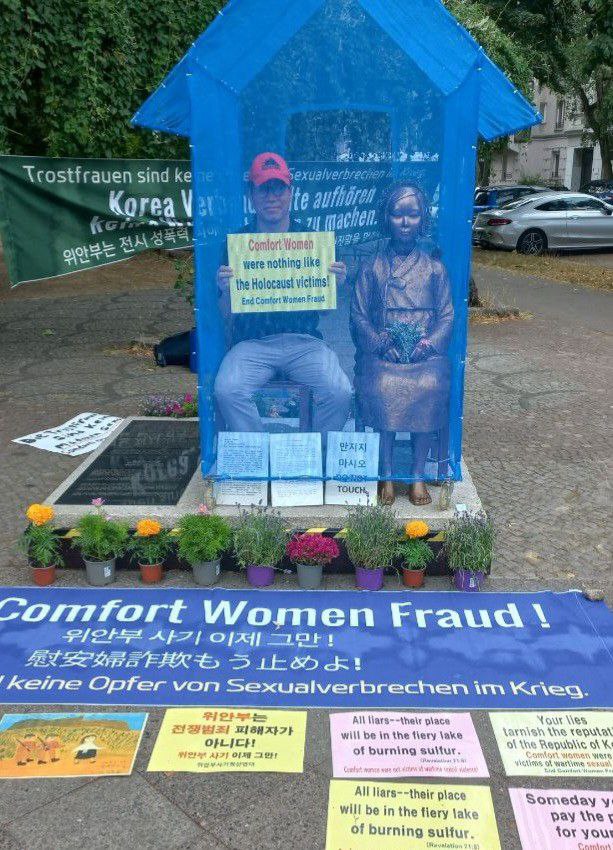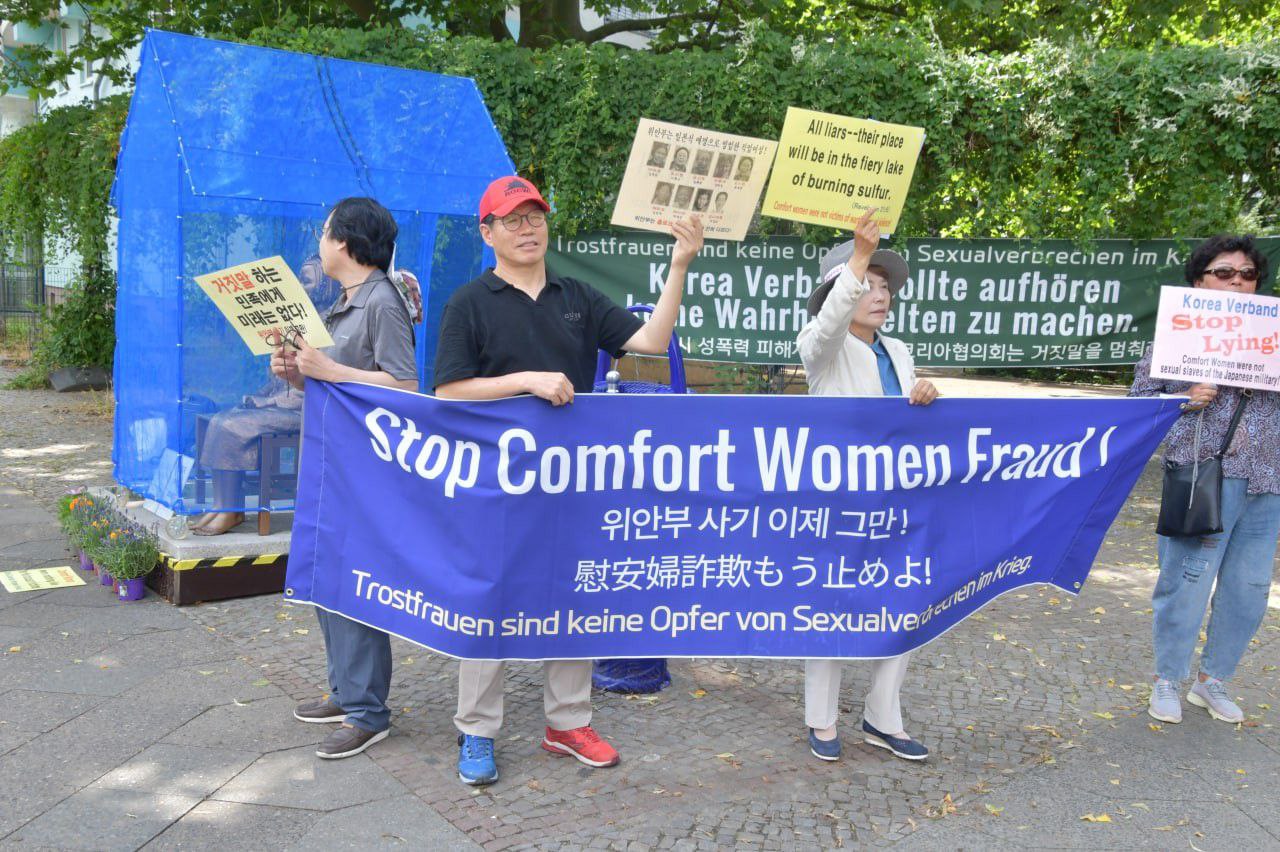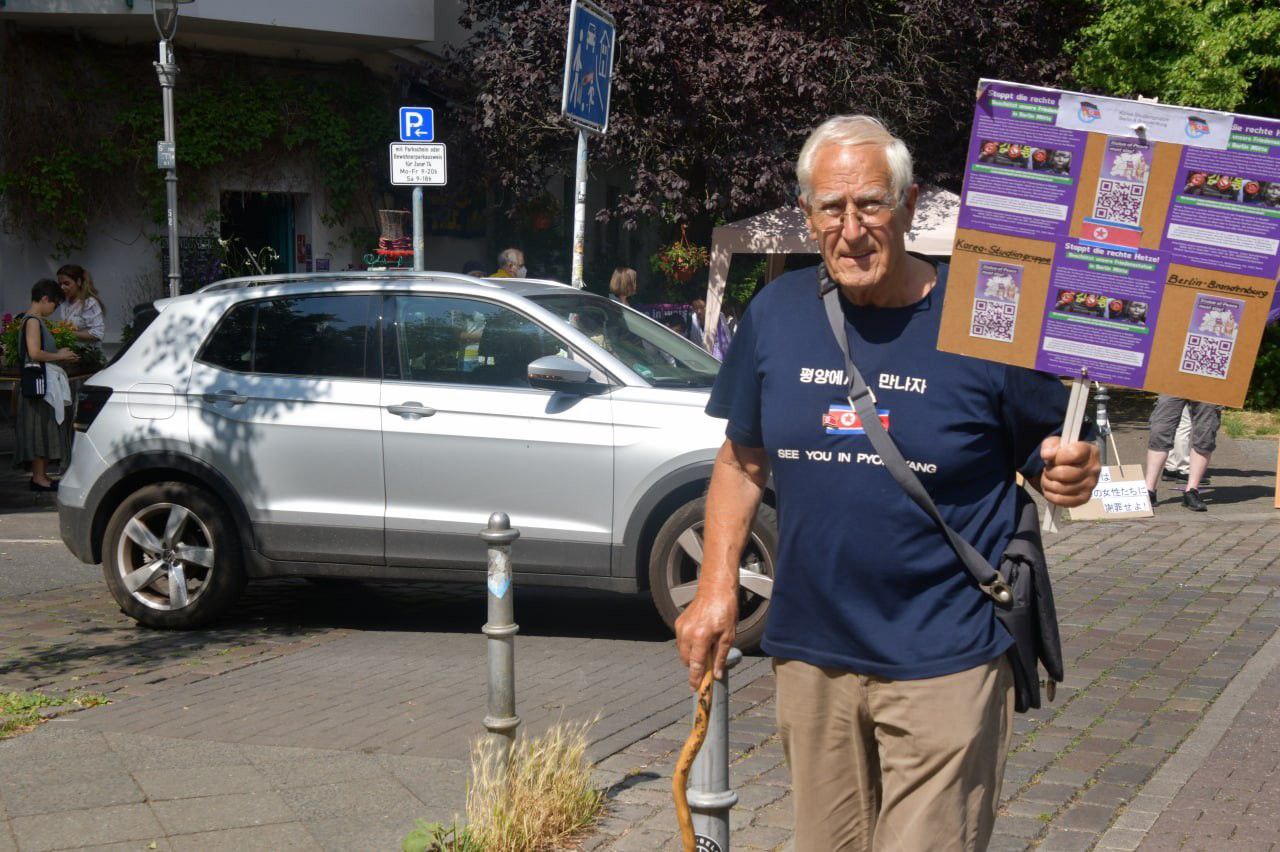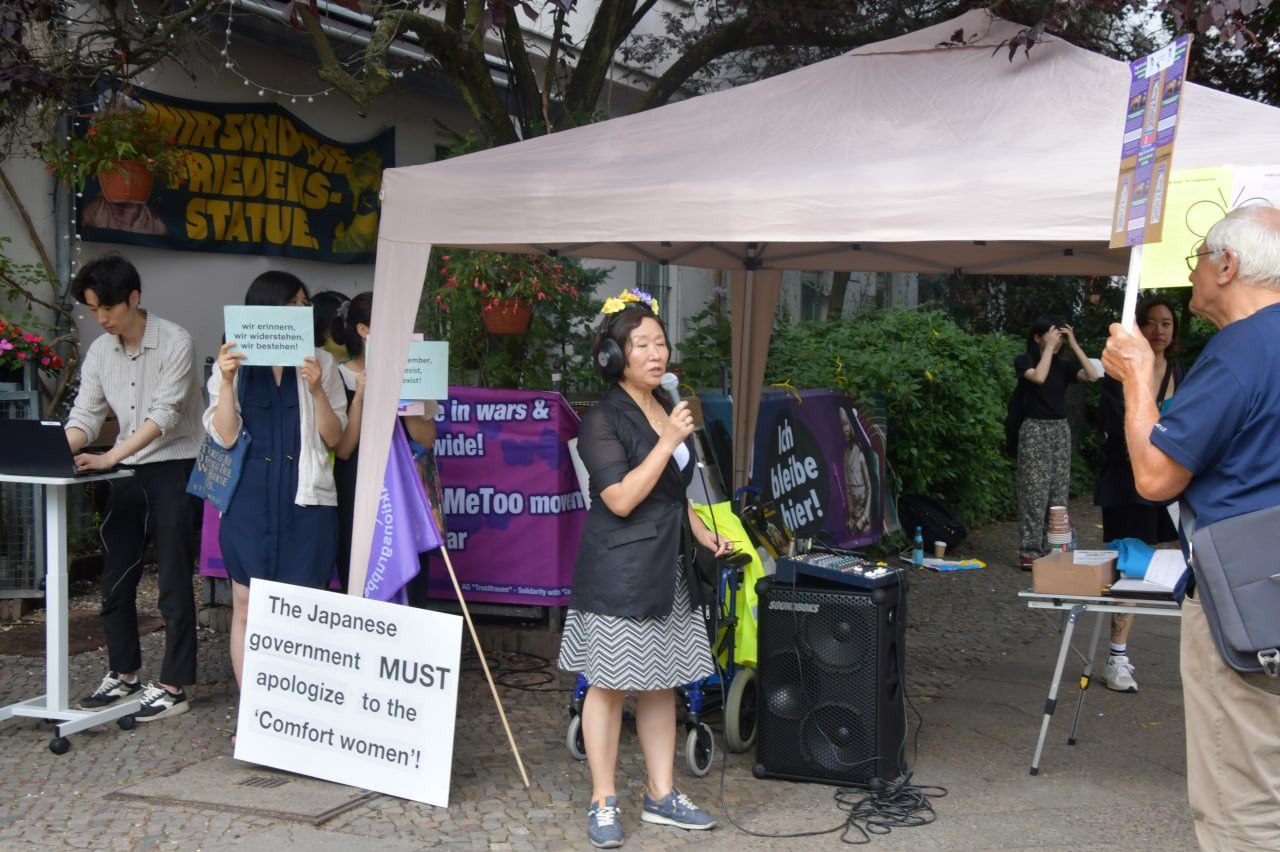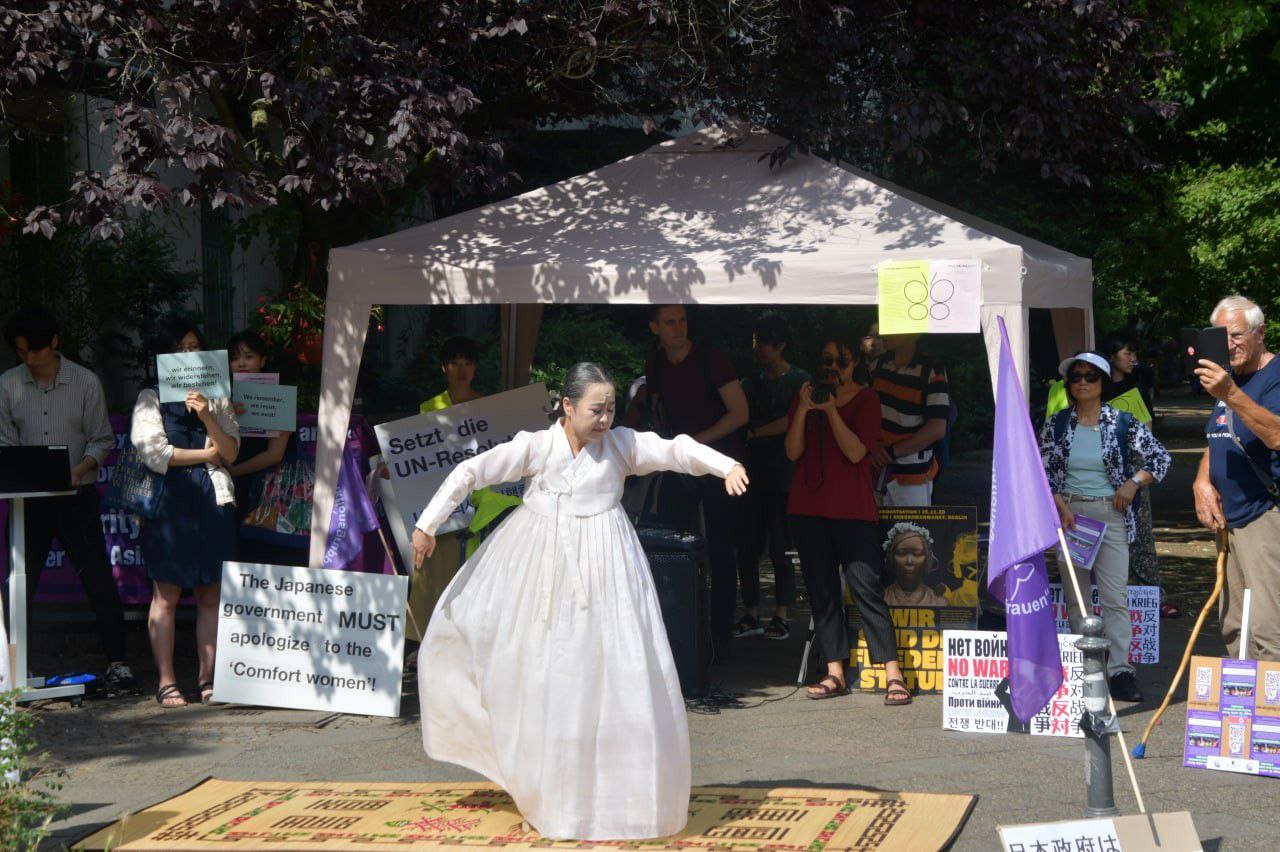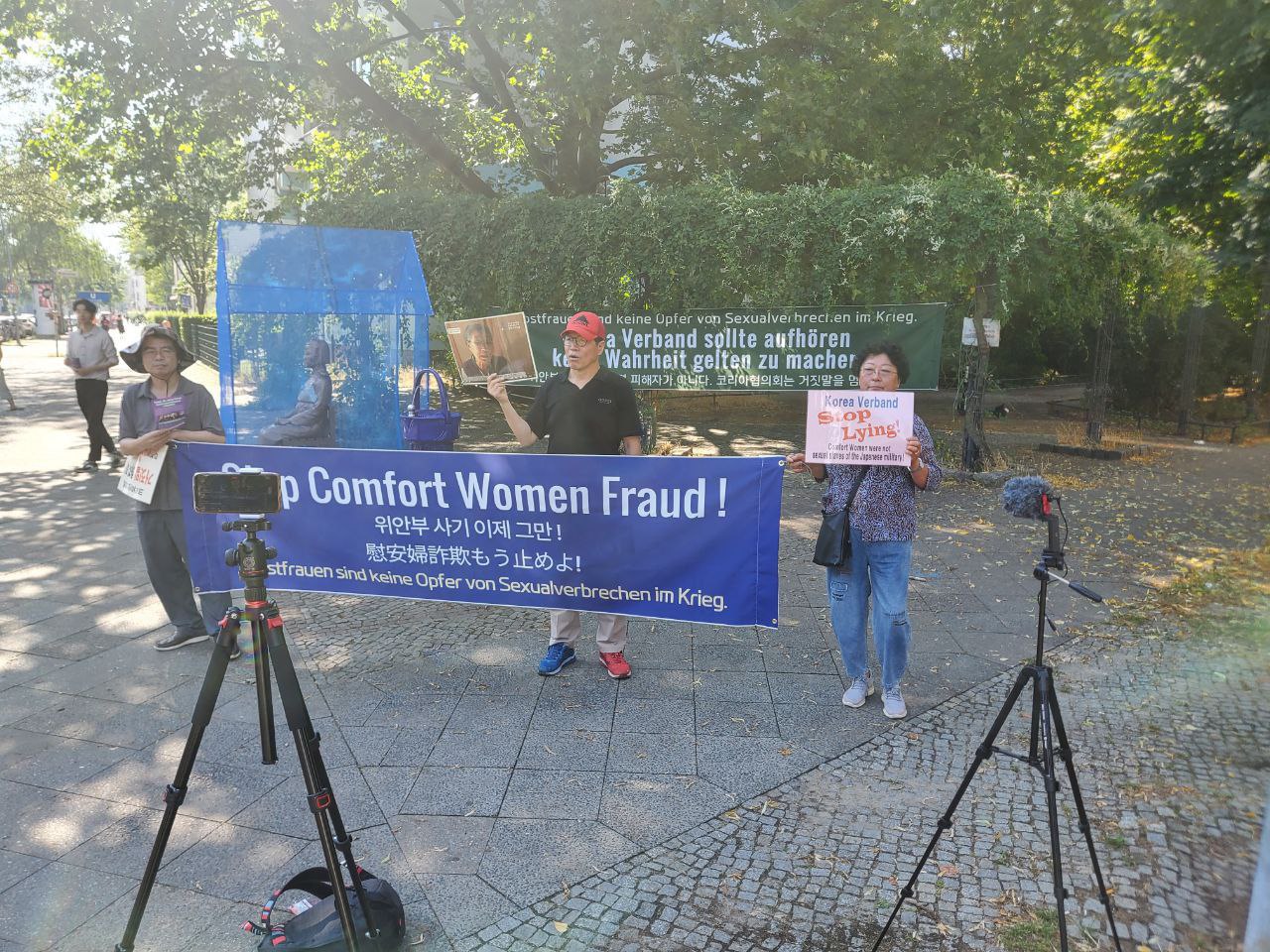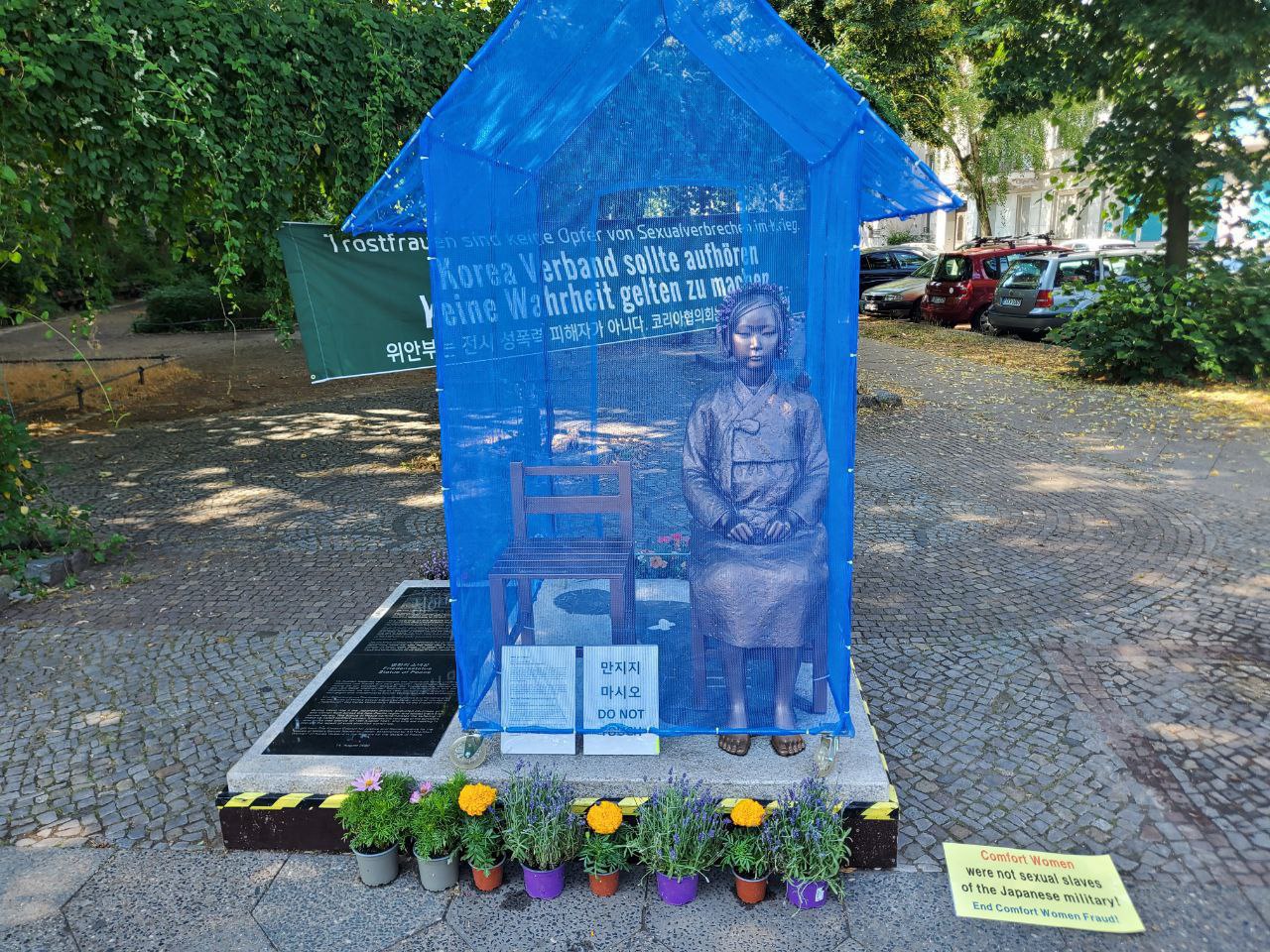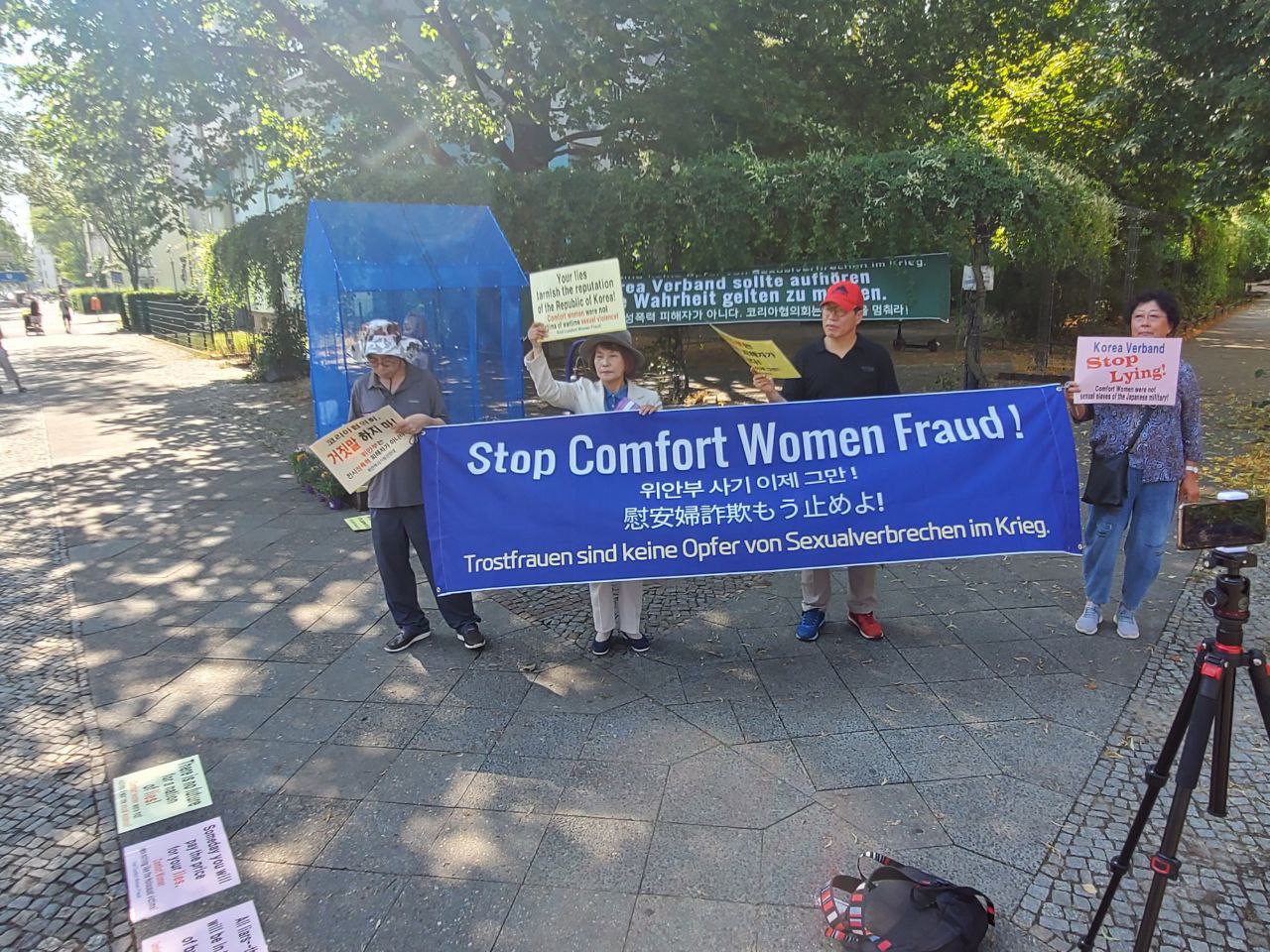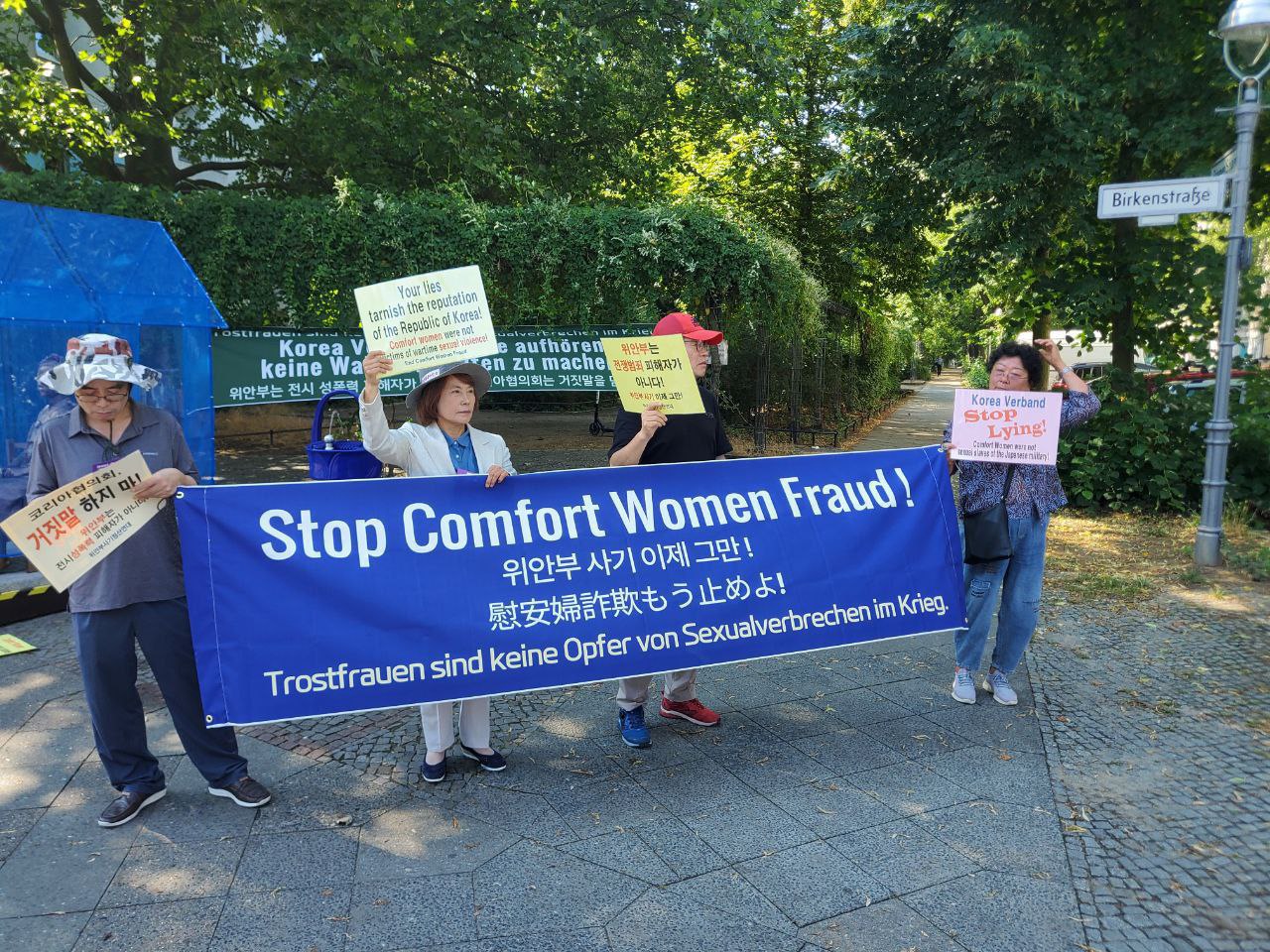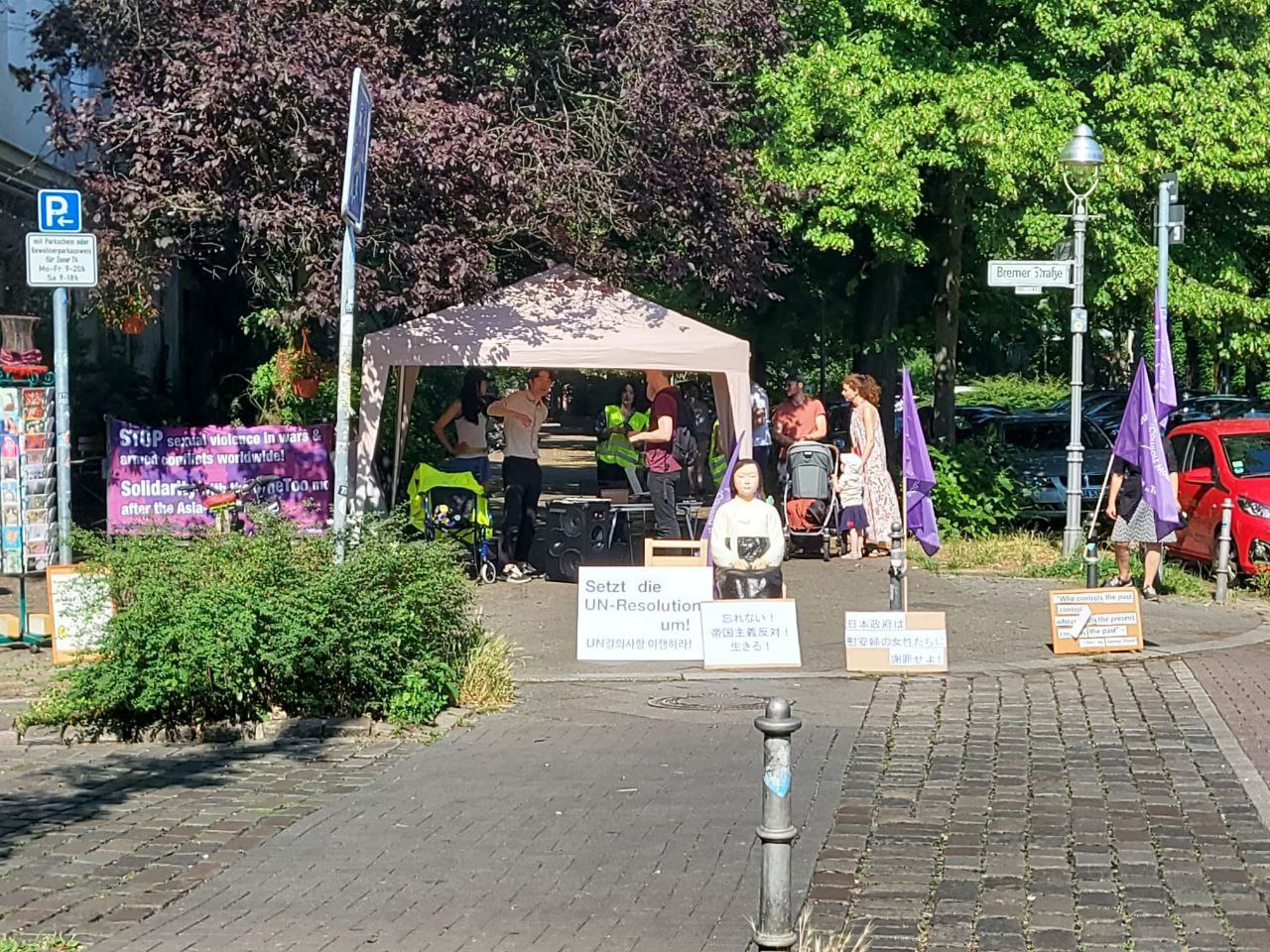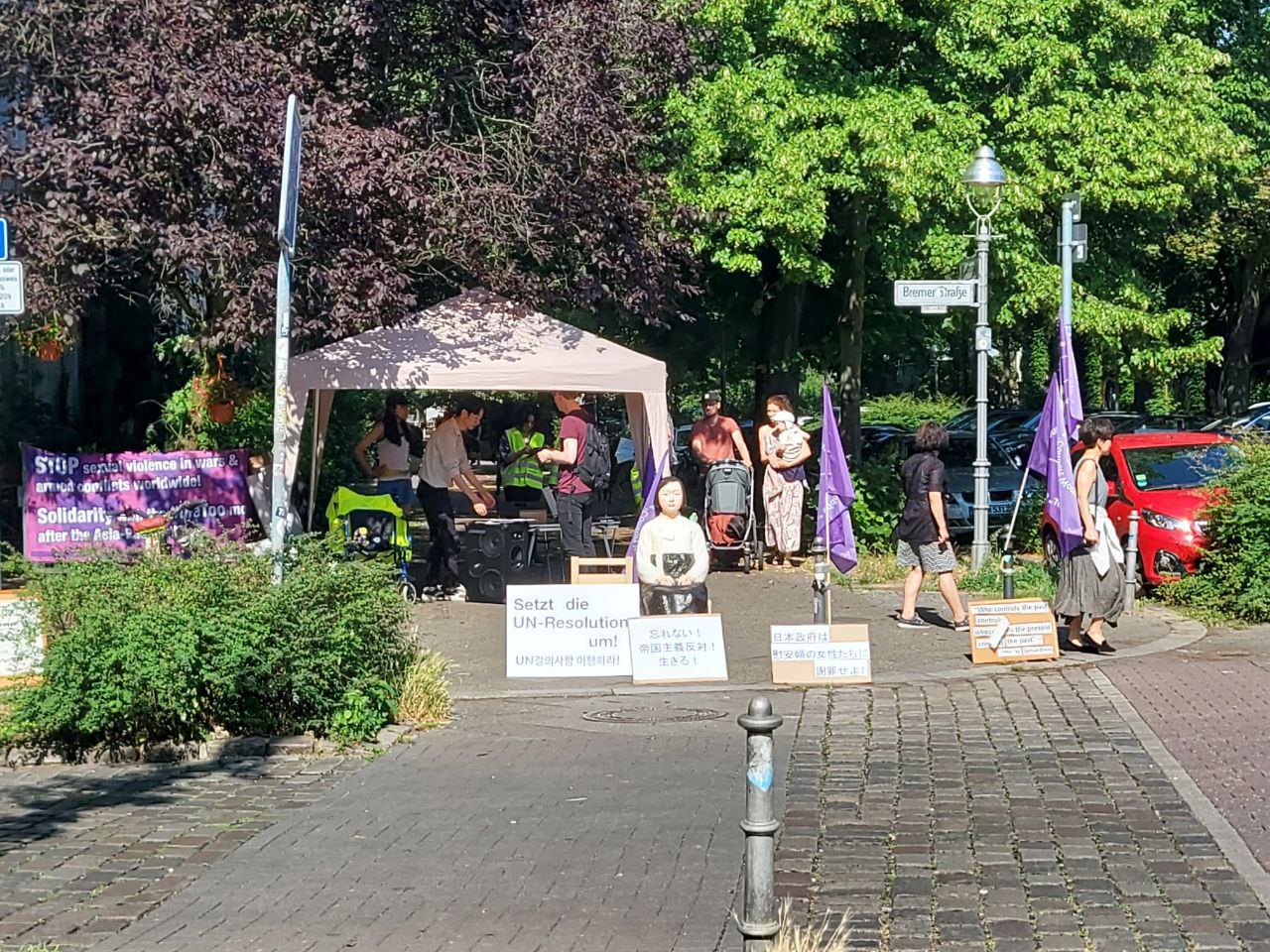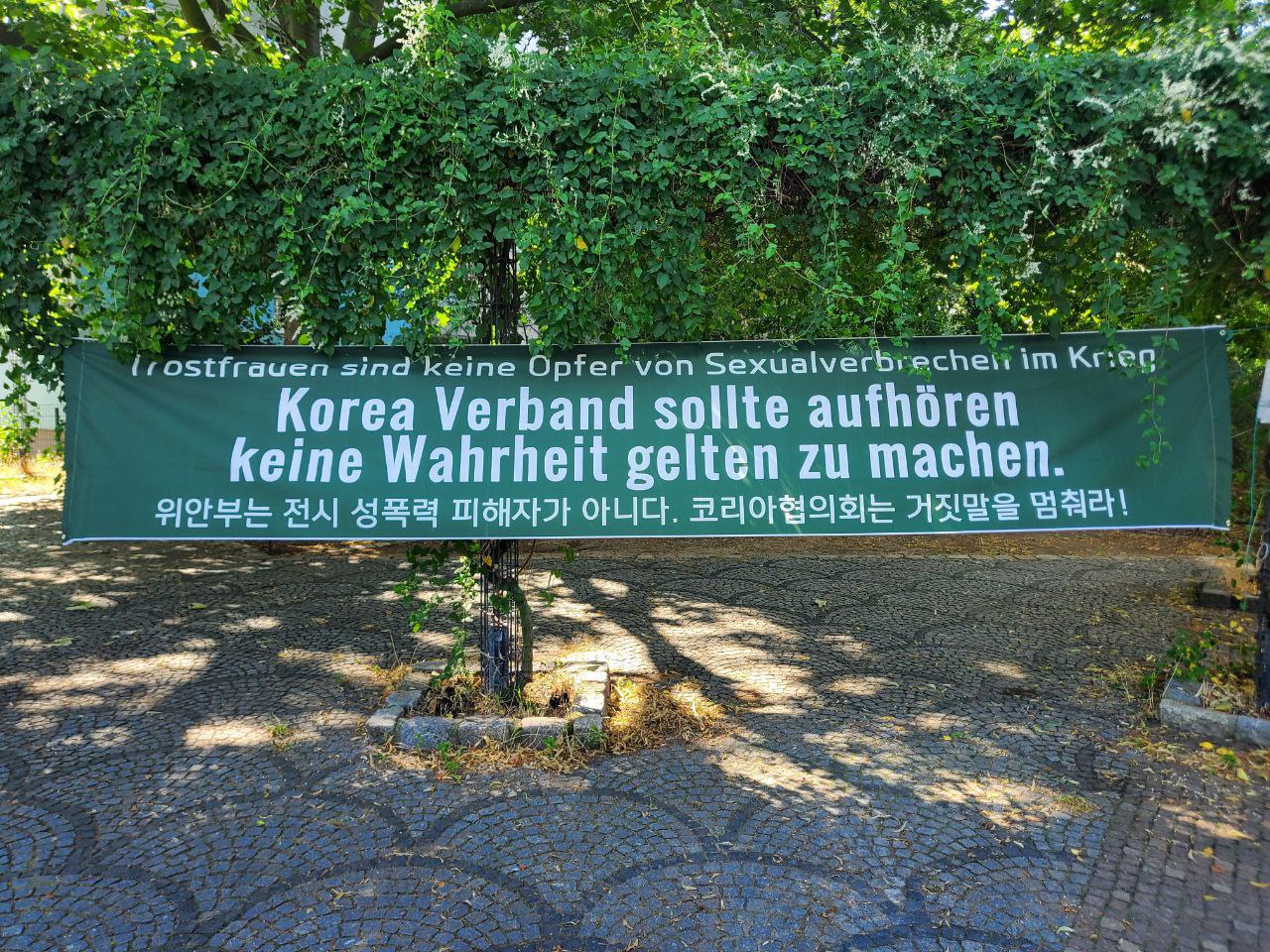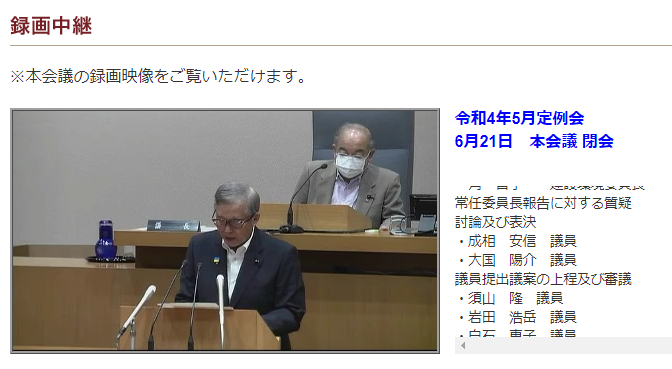韓国市民団体が結束した「慰安婦詐欺清算連帯」から朱玉順代表、李宇衍博士、 金柄憲所長が2022年6月25日(土)出国、7月1日帰国で独ベルリンを訪問しています。
目的は、ドイツ「コリア協議会 」の嘘中断と少女像の自主撤去を要求するため。
主張は、慰安婦は1)戦時性暴力の被害者ではない。 2) 日本軍の性奴隷ではない。 3) ホロコースト犠牲者は全く違う!
第二日目(2022.6.27)中継動画と写真をご紹介します。午後は、ミッテ区庁を訪問しましたが、担当者不在のため、再訪問することに。意見書は翌日28日にミッテ区長秘書室に手交することができたそうです。
************************************************************
VIDEO
VIDEO
コリア協議会は嘘をやめなさい! – 2022. 6. 27. 午前VIDEO
コリア協議会は嘘をやめなさい! 2022. 6. 27. 午後VIDEO
************************************************************
***********************************************************
【 英語版 PDF 】 【 日本語版 PDF 】
慰安婦詐欺清算連帯
2022年6月27日
ミッテ区長様への意見書
尊敬するミッテ区庁長 様
初めまして。
私たちは韓国から来た歴史研究者であり社会運動家です。
私たちはソウル鍾路区に設置された韓国駐在日本大使館前の少女像周辺で30年間も続けられてきた正義記憶連帯の慰安婦運動に対抗し、2019年末から水曜デモ中断と少女像撤去を要求して集会を続けてきた市民団体です。
私たちが韓国から遠く離れたドイツまで訪ねてきた理由は、これまで慰安婦問題関連資料と慰安婦の証言を綿密に検討した結果、正義記憶連帯とコリア協議会の慰安婦関連主張は全て嘘であり、彼らの主張によって大韓民国が嘘の国と烙印を押される不幸な事態に直面しているためです。
大韓民国では1991年8月14日に「キム·ハクスン」という女性が日本軍慰安婦被害者を自認して以来、慰安婦問題は一貫して日本軍が朝鮮の幼い少女たちを強制的に連れて行き性的暴行を日常的に行い性奴隷生活を強要し、甚だしくは殺害したりもしたという正義記憶連帯の主張が定説として固まってしまいました。
さらに、2011年12月14日には水曜デモ1,000回を記念して、日本大使館の向かい側の歩道にいわゆる「平和の少女像」を設置し、この少女像を中心に数多くの人が集まり、日本の戦争犯罪責任を追及しています。
以後、この少女像は国内に150個、海外に30個以上設置され、そのうちの一つがまさにここにあるミッテ区の少女像です。
特に、ミッテ区少女像の台には「第2次世界大戦当時、日本軍がアジア·太平洋全域で女性たちを性奴隷に強制的に連れて行き、このような戦争犯罪の再発を防ぐためにキャンペーンを行う生存者たちの勇気に敬意を表する」と刻まれています。
今まで正義記憶連帯が主張してきた内容と同じです。
さらに、この少女像の設置を主導したコリア協議会は、慰安婦女性をホロコースト犠牲者と同一視し、日本軍に無残に殺害された戦争犯罪の被害者と宣伝しています。
しかし、このような正義記憶連帯とコリア協議会の主張は全て事実ではありません。
1998年のゲイ·マクドゥーガル国連人権委員会の報告書には、戦争犯罪について「強姦を含む性暴力行為が国際紛争が進行する間、敵軍や占領軍によって行われた時」と定義しました。
したがって、国際紛争や武力衝突地域で敵対国の女性を拉致·強姦·殺害するなどの行為が戦争犯罪なのです。
しかし、当時、朝鮮は日本の占領地ではなく、朝鮮の女性は日本国民でした。
しかも慰安所は占領地女性に対する戦争犯罪防止のために設置·運用された合法的売春空間であり、慰安婦は慰安所主人と契約を締結した後に各種書類を備え営業許可を得て金銭を稼いだ性労働者でした。
彼らが相手にしていた顧客の大部分が日本軍だったので、日本式芸名をドアの前にかけて営業したという事実だけを見ても、ホロコースト犠牲者とは全く違うことが分かります。
日本軍は、慰安所の規定により定められた時間に定められた料金を支払わなければならず、慰安婦は日本軍から受け取った収入を、慰安所の主人と一定の割合で配分しました。
慰安婦の中には高額の収入でルビーやヒスイ、ダイヤモンドのような宝石を購入したり、故郷に生活費や学費などを送ったりした慰安婦もいました。
正義記憶連帯とコリア協議会が主張する戦時性暴行被害者、日本軍性奴隷、ホロコースト犠牲者という主張は全て偽りです。
慰安婦運動のシンボルである「平和の像」という名前の少女像も同様に嘘です。
この少女像は彫刻家の誤った慰安婦認識と反日敵愾心が投影された偽りと憎悪の象徴物です。
彫刻家は自身の作家ノートで「日本による植民地時代朝鮮のつぼみのように幼い少女たちと若い女性たちをだましたり強制的に戦場に連れて行って性奴隷にし、甚だしくは殺害までする無残な犯罪を躊躇なく犯した残酷な歴史を記憶させたかった。」と言いました。
しかし、これも全く事実ではありません。
特に作家は、日本軍の誘惑に騙され、強制的に戦場に連れて行かれた10代前半や半ばの幼い女性たちを表現し、11歳しか経っていない自分の娘をモデルにし、13歳~15歳の少女の姿を形象化したと言いました。
しかし、当時の法によると、10代前半には慰安婦になれなかっただけでなく、日中戦争と太平洋戦争地域で戦争していた軍人が朝鮮にまで来て、10代前半の幼い少女たちをだまし強制的に連行したという主張はあきれるばかりです。
日本軍慰安婦になるためには、慰安所の主人と契約を締結した後、管轄警察署に直接出頭して身分証明書を発給してもらわなければ出国することができず、現地に到着しても現地領事館警察署に出頭して各種書類を提出し、営業許可を得て初めて慰安婦生活ができました。
このような厳格な手続きは誘引·誘拐や拉致のような犯罪行為では慰安婦を連れて行けないという事実を明白に示しています。
そのため、「平和の像」に刻まれた碑文は、すべて日本に対する敵愾心を植え付けるための捏造された情報です。
コリア協議会は少女像を平和の象徴だと主張していますが、虚りをもとに実現できる平和はありません。
偽りは憎悪心を育て、憎悪心は必然的に葛藤と対立を招くことになります。 特に、育ち盛りの幼い世代に偽りの歴史を教えることは犯罪行為に他なりません。
偽りと憎悪の歴史を学んだ子供たちに、未来が果たして明るく美しいのかお考え下さることを願います。
嘘をつく民族に未来はありません。
不幸な歴史なので、記憶して反省しなければならないのは当然です。
しかし、必ず歴史的事実が前提にならなければなりません。
しかし、正義記憶連帯とコリア協議会の慰安婦運動は、慰安婦女性たちの人生を歪曲し、ひたすら日本を憎悪することに血眼になってきました。
そして、少女像はまさにこのような悪意的人種差別の宣伝道具です。
我々は正義記憶連帯とコリア協議会がこれ以上嘘をつかないことを強く求めます。
彼らの嘘により大韓民国が国際社会から嘘つき国家と烙印を押され、ついに「国際的孤立」という不幸な事態に直面する恐れがあります。
尊敬するミッテ区庁長様!
私たちはミッテ区庁長様をはじめとするミッテ区民の方々がこれ以上コリア協議会の嘘にだまされず、慰安婦問題の真実に目覚めることを心から願っています。
そして、偽りと憎悪の象徴物である少女像の展示延長を絶対に許さないよう、丁重にお願い申しあげます。
私たちは大韓民国の国民として大韓民国を愛しています。
ありがとうございました。
************************************************************
【慰安婦詐欺清算連帯 への支援】
チャンネルfujichan (国民行動に送金します)
【チャンネルfujichanへの後援口座】 (個人)翻訳頑張ります。
